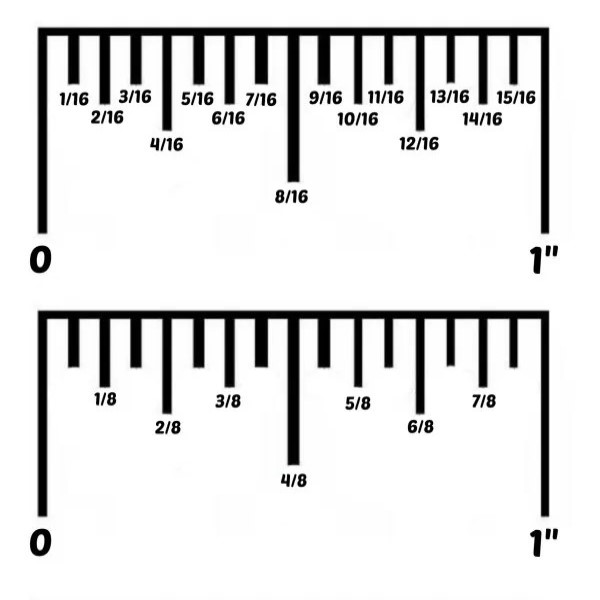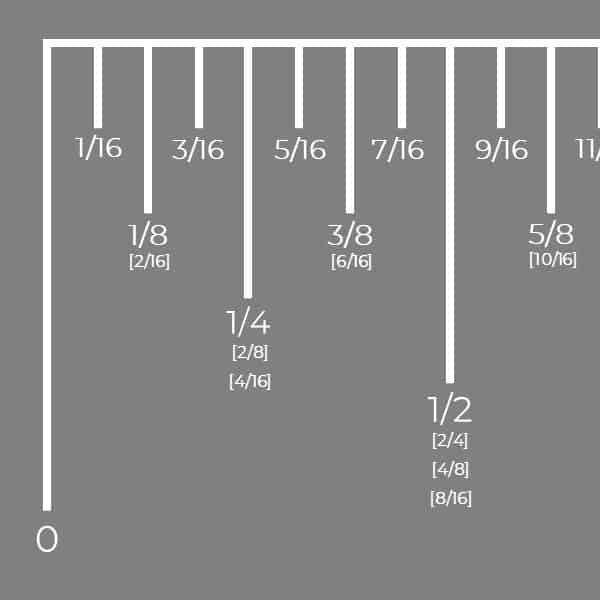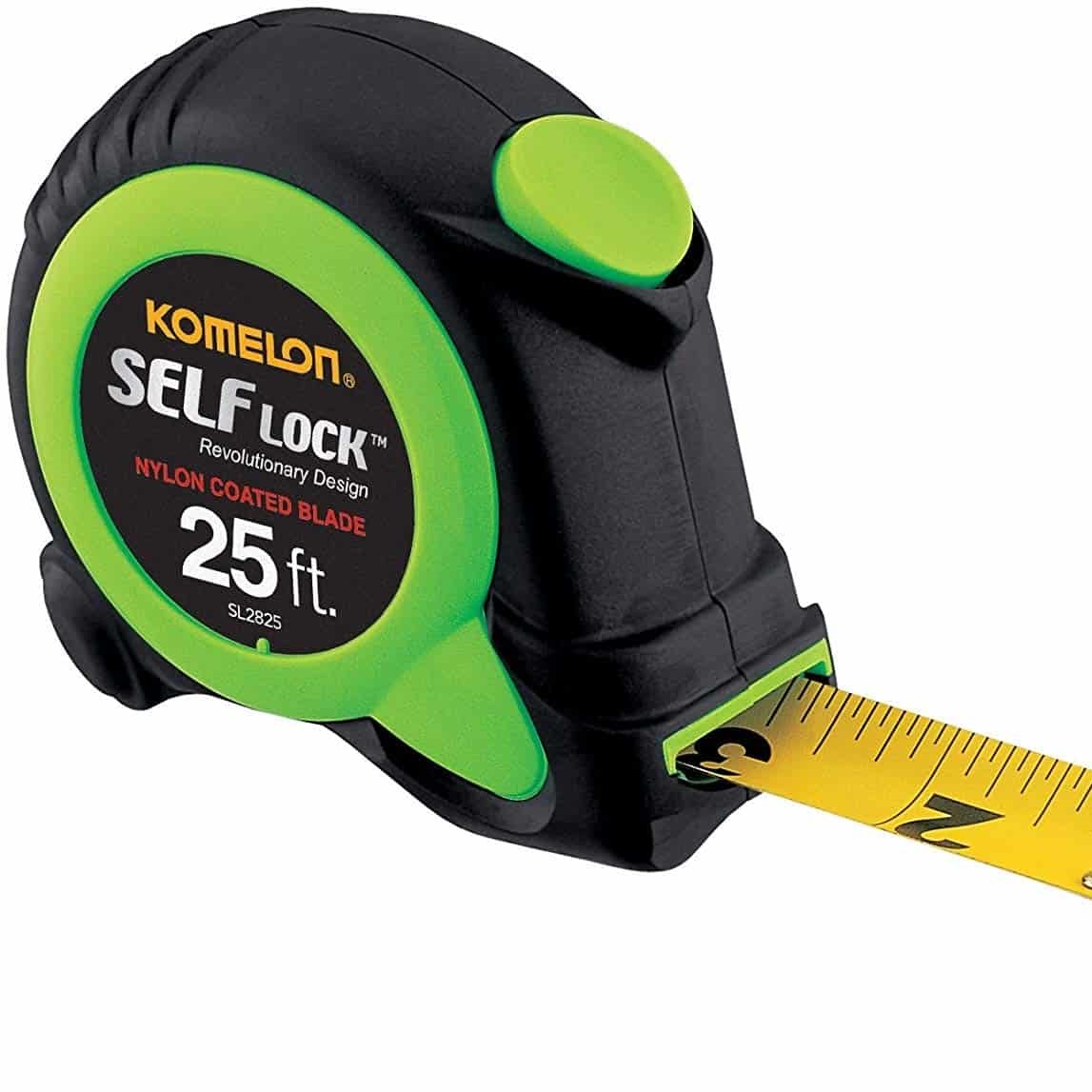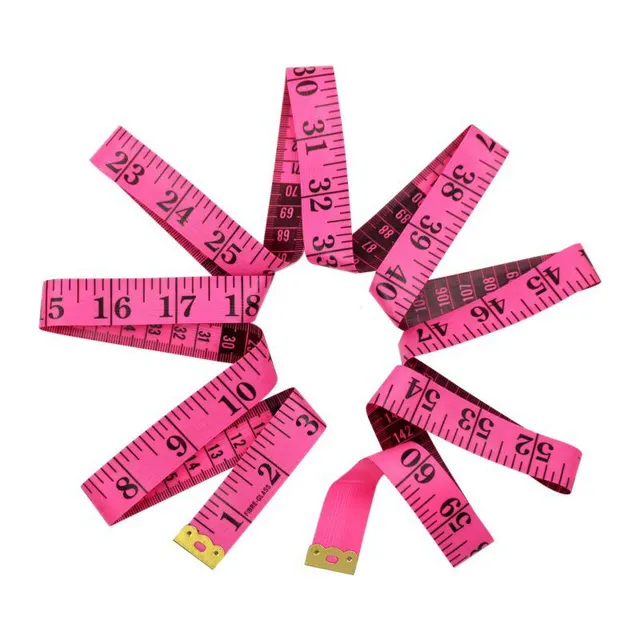
Tape Measure Cheat Sheet: Guide for Accurate Measurements
Accurate measurements are the cornerstone of any successful DIY project, whether you’re building furniture, renovating your home, or engaging in intricate crafts. However, mastering the use of a tape measure can be daunting, especially when dealing with fractional inches, metric conversions, and various measurement marks. This is where a tape measure cheat sheet becomes an invaluable tool. In this article, we will explore the essentials of using a tape measure cheat sheet, providing you with quick reference guides, tips for avoiding common mistakes, and advanced techniques to elevate your measuring skills.
 Why You Need a Tape Measure Cheat Sheet
Why You Need a Tape Measure Cheat Sheet
Simplifying Complex Measurements
One of the primary reasons to use a tape measure cheat sheet is to simplify complex measurements. Whether you’re working with fractional inches or converting to metric units, having a cheat sheet at your fingertips can save you time and reduce the likelihood of errors. By providing quick reference tables and conversion formulas, a cheat sheet ensures that you can effortlessly switch between different measurement systems as your project demands.
Enhancing Precision in DIY Projects
Precision is crucial in DIY projects. Even the smallest measurement error can lead to significant issues down the line, such as misaligned pieces or unstable structures. A tape measure cheat sheet helps you achieve consistent and accurate measurements, ensuring that every cut, fit, and assembly is executed flawlessly. Additionally, it serves as a handy guide to understand and interpret the various markings on your tape measure, further enhancing your ability to work with precision.
Streamlining Your Workflow
Using a cheat sheet can streamline your workflow by providing all necessary information in one place. Instead of constantly reaching for your phone or searching online for conversion tables or measurement tips, a tape measure cheat sheet keeps everything you need conveniently accessible. This efficiency not only speeds up your project but also helps maintain your focus, allowing you to work more effectively and complete tasks with greater confidence.
Key Components of a Tape Measure Cheat Sheet
Fractional Inches to Decimal and Millimeter Conversions
Understanding how to convert fractional inches to decimal and millimeter units is essential for accurate measurements. A tape measure cheat sheet typically includes conversion tables that allow you to quickly translate fractional inches (e.g., 1/16, 1/8, 1/4) into their decimal equivalents (e.g., 0.0625, 0.125, 0.25) and millimeters (e.g., 1.5875 mm, 3.175 mm, 6.35 mm). This section is particularly useful when working on projects that require both imperial and metric measurements, ensuring seamless integration of different measurement systems.
Example Conversion Table
| Fractional Inch | Decimal Inch | Millimeters |
|---|---|---|
| 1/16 | 0.0625 | 1.5875 |
| 1/8 | 0.125 | 3.175 |
| 3/16 | 0.1875 | 4.7625 |
| 1/4 | 0.25 | 6.35 |
| 5/16 | 0.3125 | 7.9375 |
| 3/8 | 0.375 | 9.525 |
| 7/16 | 0.4375 | 11.1125 |
| 1/2 | 0.5 | 12.7 |
| 9/16 | 0.5625 | 14.2875 |
| 5/8 | 0.625 | 15.875 |
| 11/16 | 0.6875 | 17.4625 |
| 3/4 | 0.75 | 19.05 |
Understanding Measurement Marks and Symbols
A tape measure cheat sheet also deciphers the various measurement marks and symbols commonly found on a tape measure. These include:
- Black Diamonds: Often used to indicate studs in wall framing, typically spaced 16 or 24 inches apart.
- Red Marks: Highlight important measurements, such as every 16 inches, to assist in quick layout planning.
- Hooks and Tangents: The metal tip of the tape measures, which anchors the tape at zero and adjusts for different measurement techniques.
- Blade Color Coding: Different colors for different sides of the tape to aid in one-handed measurements.
Quick Reference for Common Building Materials
Different building materials have standard sizes and dimensions that are frequently used in construction and DIY projects. A tape measure cheat sheet includes common sizes for lumber (e.g., 2×4, 2×6), sheet materials (e.g., plywood, drywall), and other materials like tile and molding. This information helps you quickly identify and select the right materials for your project without extensive searching or measuring.
Standard Formulas and Theorems
For more advanced projects, having standard formulas and theorems on your cheat sheet can be incredibly useful. This includes:
- Pythagorean Theorem: Essential for calculating diagonal measurements in right-angled structures.
- Area and Volume Formulas: Useful for determining the amount of material needed for projects.
- Conversion Factors: Quick multipliers to switch between different measurement units seamlessly.
 How to Use a Tape Measure Cheat Sheet Effectively
How to Use a Tape Measure Cheat Sheet Effectively
Creating a Personalized Cheat Sheet
While many tape measure cheat sheets are available online, creating a personalized one tailored to your specific needs can enhance its effectiveness. Start by identifying the most common measurements and conversions you use in your projects. Include these in your cheat sheet, along with any additional notes or tips that cater to your unique workflow. Laminating the cheat sheet or printing it on durable material ensures it withstands the wear and tear of regular use on job sites or workbenches.
Integrating Cheat Sheets with Digital Tools
In today’s digital age, integrating a tape measure cheat sheet with digital tools can further streamline your measuring process. Consider using smartphone apps that provide digital cheat sheets, allowing you to access conversion tables and measurement tips on the go. Additionally, some digital tape measures come with built-in cheat sheet features, offering instant conversions and measurement aids directly on the device.
Displaying Cheat Sheets for Easy Access
Ensure your tape measure cheat sheet is easily accessible during your projects. Position it near your workspace or tape measure, so you can quickly refer to it without interrupting your workflow. Whether you keep a printed version clipped to your workbench or use a digital version on your phone, having immediate access to the cheat sheet enhances efficiency and reduces the likelihood of measurement errors.
Regularly Updating Your Cheat Sheet
As you gain more experience and tackle different types of projects, your measurement needs may evolve. Regularly update your tape measure cheat sheet to include new conversions, formulas, and tips that reflect your growing expertise. This continuous improvement ensures that your cheat sheet remains a relevant and indispensable tool throughout your DIY journey.
Common Mistakes to Avoid
Ignoring Measurement Markings
One common mistake is overlooking the specific measurement markings on the tape measure. Each mark, whether it’s a fractional inch, metric equivalent, or a special symbol, serves a purpose. Refer to your tape measure cheat sheet to understand and interpret these markings correctly, ensuring that you don’t miss critical information that could compromise your measurements.
Relying Solely on the Tape Measure
While a tape measure cheat sheet is a powerful tool, relying solely on it without proper measuring techniques can lead to inaccuracies. Always use proper measuring methods, such as keeping the tape straight and taut, reading the measurement at eye level, and ensuring the tape is firmly anchored to the starting point. Combining these techniques with your cheat sheet maximizes measurement accuracy.
Skipping Double-Checking Measurements
Even with a cheat sheet, skipping the step of double-checking your measurements can result in costly mistakes. Always verify your measurements by measuring twice, especially before making critical cuts or assembling parts. This habit minimizes errors and ensures that your project stays on track.
Misusing the Cheat Sheet
Using the cheat sheet incorrectly can lead to confusion and errors. Applying the wrong conversion tables is a common mistake. Misunderstanding measurement symbols can also create issues. Take the time to familiarize yourself with your cheat sheet’s layout. Ensure you understand its contents fully. This knowledge allows you to use the correct sections effectively. By doing this, you can meet your specific measuring needs.
Not Accounting for Material Variations
Different materials can behave differently when measured and cut. For example, wood can expand or contract with moisture, affecting your measurements. Use your tape measure cheat sheet to account for these variations by adjusting your measurements accordingly, preventing issues like warped cuts or misaligned pieces.
 Advanced Techniques
Advanced Techniques
Leveraging Geometry for Complex Measurements
For projects involving complex shapes and angles, leveraging geometric principles can enhance measurement accuracy. Utilize the Pythagorean theorem and other geometric formulas found on your tape measure cheat sheet to calculate diagonal lengths, angles, and other critical dimensions precisely. This approach is particularly useful in tasks like framing, roofing, and creating custom furniture.
Applying the Pythagorean Theorem
When constructing right-angled structures, use the Pythagorean theorem to determine the length of the hypotenuse. For example, if you need to measure the diagonal of a rectangle with sides measuring 3 feet and 4 feet, apply the formula a² + b² = c²:
3² + 4² = 9 + 16 = 25
√25 = 5 feet
This calculation ensures that your diagonal measurements are accurate, contributing to the overall stability and symmetry of your project.
Utilizing Conversion Tools and Apps
While a physical tape measure cheat sheet is invaluable, complementing it with digital conversion tools and apps can further enhance your measuring capabilities. These tools offer instant conversions, unit switching, and even complex calculation features, providing an additional layer of precision. Integrate these digital solutions into your workflow to streamline measurements and reduce manual calculation errors.
Incorporating Templates and Guides
Creating templates and guides based on your tape measure cheat sheet can save time and improve consistency in repetitive measurements. For instance, if you’re frequently cutting materials to a specific length or angle, design a template that incorporates these measurements, allowing you to quickly replicate them without constantly referring back to the cheat sheet. This method not only speeds up your work but also ensures uniformity across all your project components.
Understanding and Using Advanced Measurement Marks
Some tape measures come with advanced measurement marks beyond standard fractional inches and metric units. These can include specialized symbols for electrical wiring, plumbing, or carpentry. Incorporate these advanced marks into your tape measure cheat sheet to fully utilize all the features your tape measure offers. Understanding these specialized marks broadens your measuring capabilities, making your cheat sheet a comprehensive reference tool.
Practical Applications
Woodworking and Carpentry
In woodworking and carpentry, precision is paramount. Use your tape measure cheat sheet to accurately measure and mark wood for cuts, joints, and assemblies. Quick reference tables for fractional inches and metric conversions allow you to switch between measurement systems seamlessly, especially when working on custom builds or collaborating with other professionals who may use different units.
Cutting and Assembling
Accurate measurements ensure that cuts are precise and pieces fit together seamlessly. Refer to your cheat sheet to quickly determine the right measurements for cuts, whether you’re creating dovetail joints, aligning shelves, or fitting baseboards. This precision minimizes material waste and enhances the overall quality of your craftsmanship.
Home Improvement and Renovation
Home improvement projects, such as installing cabinets, fitting tiles, or mounting fixtures, require accurate measurements to ensure proper fit and finish. A tape measure cheat sheet provides the necessary conversions and measurement marks to tackle these tasks confidently.
Cabinet Installation
When installing cabinets, accurate measurements ensure that each unit fits perfectly within the designated space. Use your cheat sheet to measure and mark the wall, adjusting for stud locations and ensuring that each cabinet is level and securely anchored.
Sewing and Upholstery
In sewing and upholstery, precise measurements are essential for achieving professional results. Use your tape measure cheat sheet to measure fabric accurately, ensuring that seams are even and fittings are aligned.
Fabric Cutting
Accurate fabric measurements prevent wastage and ensure that your designs fit as intended. Refer to your cheat sheet for quick conversions from inches to centimeters, especially when working with international patterns or collaborating with designers who use metric measurements.
Metalworking and Fabrication
Metalworking projects often involve intricate measurements and precise cuts. A tape measure cheat sheet aids in converting fractional inches to millimeters, ensuring that metal pieces fit together correctly and structures are stable.
Component Alignment
Proper alignment of metal components is crucial for the functionality and safety of the final product. Use your cheat sheet to verify measurements and ensure that each component is positioned accurately before welding or bolting.
Crafting and Hobbies
Whether you’re crafting handmade jewelry, creating model structures, or engaging in other hobbies, accurate measurements enhance the quality and consistency of your work. A tape measure cheat sheet provides the flexibility to switch between different measurement systems and ensures that your projects meet your desired specifications.
Consistent Sizing
Maintain consistent sizing across multiple pieces by referring to your cheat sheet for quick and accurate measurements. This consistency is especially important in projects like quilt making, where uniform dimensions are key to the overall aesthetic.
 Tips for Maximizing the Effectiveness
Tips for Maximizing the Effectiveness
Keep It Visible and Accessible
Place your cheat sheet in a location where it’s easily visible and accessible while working. Whether it’s taped to your workbench, stored in a pouch attached to your tape measure, or saved as a digital file on your smartphone, having quick access to your cheat sheet minimizes disruptions and maintains your workflow.
Customize Your Cheat Sheet
Tailor your tape measure cheat sheet to suit your specific needs and the types of projects you frequently undertake. Include only the most relevant conversions, measurements, and tips that you regularly use, making it a highly efficient and personalized tool.
Regular Practice and Familiarization
Regularly practice using your cheat sheet to become familiar with its contents and layout. The more you use your cheat sheet, the quicker you’ll be able to reference it during projects, enhancing your measuring speed and accuracy.
Combine with Other Measuring Tools
Pair your tape measure cheat sheet with other measuring tools, such as squares, levels, and protractors, to improve overall measurement accuracy. Using multiple tools in conjunction ensures that your measurements are double-checked and precise.
Update Your Cheat Sheet Regularly
As you gain more experience and take on different types of projects, update your tape measure cheat sheet to include new conversions, formulas, and tips. This ongoing refinement keeps your cheat sheet relevant and useful, adapting to your evolving measurement needs.
Advanced Tape Measure Cheat Sheet Features
Incorporating Architectural Symbols
For those involved in architectural design or complex construction projects, incorporating architectural symbols into your tape measure cheat sheet can be highly beneficial. Symbols for different types of materials, structural elements, and measurement standards provide an added layer of information that enhances your ability to interpret and implement detailed plans accurately.
Including Industry-Specific Conversions
Different industries may require specific measurement conversions beyond standard fractional inches and millimeters. For example, electrical work might involve conversions related to wire gauges, while plumbing could require measurements for pipe diameters and fittings. Tailor your cheat sheet to include these industry-specific conversions, making it an indispensable tool for specialized projects.
Adding Step-by-Step Measurement Guides
Including step-by-step measurement guides on your cheat sheet can assist in more complex measuring tasks. These guides provide clear instructions on how to measure specific dimensions, use advanced measurement techniques, and apply geometric principles, ensuring that even intricate measurements are handled with ease and accuracy.
Visual Aids and Diagrams
Visual aids and diagrams can enhance the usability of your tape measure cheat sheet. Incorporate charts, graphs, and illustrations that depict common measurement scenarios, conversion tables, and measurement techniques. These visual elements make the cheat sheet easier to understand and reference quickly, especially for visual learners.
Multi-Language Support
If you work in a multilingual environment or collaborate with professionals who use different units of measurement, incorporating multi-language support into your tape measure cheat sheet can be incredibly useful. Provide translations for key terms and conversions, ensuring that your cheat sheet is accessible and effective for a diverse range of users.
Real-World Examples of Cheat Sheet Usage
Case Study: Home Renovation Project
Imagine you’re renovating your kitchen, involving tasks like installing new cabinets, fitting countertops, and laying tile flooring. A tape measure cheat sheet proves indispensable in this scenario. It provides quick conversions between inches and millimeters, helps you accurately measure cabinet placements and countertop dimensions, and ensures that tile cuts are precise. By referring to your cheat sheet, you streamline the renovation process, minimize material wastage, and achieve a professionally finished kitchen.
Case Study: Custom Furniture Building
Building custom furniture requires meticulous measurements to ensure pieces fit together seamlessly. A tape measure cheat sheet assists you in accurately measuring wood dimensions, converting measurements for different parts of the furniture, and maintaining consistency across multiple components. This precision results in sturdy, aesthetically pleasing furniture that meets your design specifications.
Case Study: DIY Craft Projects
Engaging in complex DIY crafts, such as making handmade quilts or constructing model airplanes, demands exact measurements for consistency and quality. Your cheat sheet helps you quickly reference necessary conversions, maintain uniform dimensions, and follow detailed patterns accurately. This leads to high-quality finished products that reflect your craftsmanship and attention to detail.
Enhancing Your Measuring Skills
Understanding Tape Measure Proficiency
Proficiency with a tape measure involves more than reading measurements. It requires an understanding of measurement principles and conversion techniques. You must also apply this knowledge effectively in different contexts. A tape measure cheat sheet acts as a learning tool and a reference guide. It helps you develop comprehensive measuring skills. These skills can enhance your project outcomes.
Practicing Accurate Measuring Techniques
Regular practice is essential to mastering accurate measuring techniques. Use your cheat sheet to guide your measurements, ensuring that you familiarize yourself with various conversion methods and measurement marks. Over time, this practice builds muscle memory, making accurate measurements second nature.
Learning from Mistakes
Mistakes are inevitable in any learning process. Use your tape measure cheat sheet to analyze and understand where errors occur, whether in misreading measurements, incorrect conversions, or improper alignment. By identifying and learning from these mistakes, you can continuously improve your measuring accuracy and project quality.
Seeking Professional Guidance
Learning from experienced professionals can significantly enhance your measuring skills. Professionals often have tips and tricks for using tape measures effectively, and incorporating this knowledge into your cheat sheet can provide valuable insights. Attend workshops, watch tutorial videos, or consult with seasoned DIY enthusiasts to gain practical measuring techniques that complement your cheat sheet.
 Conclusion
Conclusion
A tape measure cheat sheet is essential for anyone involved in DIY projects or construction. It is also useful for crafting and activities that require precise measurements. The cheat sheet provides quick reference guides and conversion tables. Additionally, it offers essential measurement tips. This tool simplifies the measuring process and enhances accuracy. It also streamlines your workflow significantly. Whether you are a seasoned professional or a beginner enthusiast, a cheat sheet can improve your measuring quality. Integrating it into your toolkit boosts project efficiency. Embrace the convenience and precision it offers. This way, you can elevate your measuring skills for every project with confidence.

